To read the full post, you may need to click through to your browser, as the post may be too long to read in email. Sorry, but not actually sorry…

I’m not going to include much by way of introduction today—plenty has been written about what the O Antiphons are, why they are significant, and why praying with them during the last days of Advent can be a fruitful spiritual practice. If you’re interested in exploring these topics further, I’d love for you to check out Signs + Seasons—I have the honor and pleasure of curating our upcoming December 15th issue, which is themed generally around the O Antiphons, and there are some truly delightful resources that I’m thrilled to share with y’all.1
Today, we’re taking all of that for granted and talking about how to pray the O Antiphons. Of course, this isn’t the only way—far from it! Meditating on each antiphon throughout the day, praying it with your grace before meals, coloring ornaments with your children, and reading the passages in the Old Testament are all incredible ways to bring this ancient tradition into your personal and family prayer.2
However, in the Dietz household, we sing things. Lots of things. Our two-year-old has started learning songs in the last few months and will regularly interrupt bedtime, car ride conversations, or goodnighttime prayers with:
“Hey mommy?”
“Yes?”
“OLD MCDONALD HAD A FARM E-I-E-I-E-I-O MOO HERE MOO ALL-WHERE E-I-E-I-O”
Or, more recently, she’ll walk around our home singing “allulah allulah allulah ave-gina aaaaaaaaave-a-gina”3
All this to say, when we are given the chance to sing something, we sing something. And that includes the O Antiphons, which have traditional chant melodies associated with them. Chanting the antiphons—whether as standalone songs or in the context of the Vespers Magnificat—is a beautiful way to pray them.4
But chant can be intimidating! The notes are shaped like squares, the ups and downs of the music can require decoding if you’re used to traditional sheet music, and there are several different flavors of chant tones…5 If you’re anything like me, you give up before you begin, simply out of overwhelm. But if you’re anything like
, you read and learn and study and pray and eventually crack the code. And then you teach your wife.I am thrilled to share with you some recordings you can use to learn and/or to pray the daily O Antiphon during December 17-23.6 These recordings, unlike many you’ll find on YouTube, are intended for newcomers to Gregorian Chant. The cadence is slower, the notes are more differentiated, and the words are (hopefully!) easier to follow.
Please know that James and I are not professional singers or chanters, and we’re not members of a religious community! We’re just folks who love to sing and chant. These recordings were done in our home one evening, so you may hear the patter of feet or the rain sounds of our daughters’ sound machine in the background. But we hope that you feel welcomed into our home and into our prayer as you sing with us!
O Sapientia (December 17)
O Wisdom,
who proceeds from the mouth of the Most High,
reaching out mightily from end to end,
and sweetly arranging all things:
come to teach us the way of peace.
O Adonai (December 18)
O Mighty Lord,
and leader of the house of Israel,
who appeared to Moses in the burning bush,
and on Sinai gave him the law,
come to redeem us with outstretched arm.
O Radix Jesse (December 19)
O Root of Jesse,
who stand as a sign for the people,
kings stand silent in your presence,
whom the nations will worship:
come to set us free,
put it off no longer.
O Clavis David (December 20)
O Key of David,
and scepter of the house of Israel,
you open, and no one shuts,
you shut, and no one opens:
come, and lead the prisoner
from jail.
seated in darkness
and in the shadow of death.
O Oriens (December 21)
O Dawn,
splendor of eternal light,
and sun of justice,
come, and shine on those,
seated in darkness,
and in the shadow of death
O Rex Gentium (December 22)
O King of the Nations,
and the one they desired,
keystone,
who makes both peoples one,
come and save mankind,
whom you shaped from the mud.
O Emmanuel (December 23)
O Emmanuel,
the one awaited by the gentiles,
and their Savior:
come to save us,
Lord our God.
Since the evening of December 24 is Vespers I—the anticipatory vigil liturgy—for Christmas, there is no major Advent antiphon on that night. It’s Christmas! Let’s party!!
Bonus Chant: Alma Redemptoris Mater
The other recording I’d love to share with you is the Alma Redemptoris Mater, which is our seasonal Marian hymn for Advent and (extended) Christmastide. It is sung after Mass and after Compline (night prayer) from the first Sunday of Advent through February 2, the feast of Candlemas and the last possible day you can claim it’s “still Christmas”.7
Holy mother of our Redeemer,
thou gate leading to heaven and star of the sea;
help the falling people who seek to rise,
thou who, all nature wondering, didst give birth to thy holy Creator.
Virgin always, hearing the greeting from Gabriel’s lips,
take pity on sinners.
If you’d like to learn more about the Marian hymns we cycle through each year—there are four, so they don’t correspond exactly with the seasons of the liturgical calendar—I’d highly recommend this piece from Adoremus bulletin and/or this set of prints on Etsy. We have the latter in a frame by our little home oratory and (in theory, at least) change the print as the seasons pass us by. The decorations match the mood of the seasons, and it’s lovely to be able to learn and remember each hymn.
I hope you enjoyed this special (audi-O!) edition of Whole + Holy, and know that you remain in our prayers as we continue to make our way toward Christmas.
Signs + Seasons is an ecumenical bimonthly roundup of seasonal/liturgical living posts. Our goal is to showcase a variety of perspectives and offer ideas for leaning into the liturgical seasons without pushing the idea that living liturgically has to look a certain way. Sign up here!
Here is a page with the passages from Isaiah listed out, in case you want to dive more deeply into the Scriptural origin of the antiphons!
Alleluia, Salve Regina, in toddler speak ;)
An antiphon is, according to Oxford Languages, “(in traditional Western Christian liturgy) a short sentence sung or recited before or after a psalm or canticle”. This definition is helpful for understanding why the Major//O Antiphons are called Antiphons—they are traditionally sung before and after the chanting or recitation of the Magnificat (Mary’s song of praise from Luke 1:46-55) each evening at Vespers.
On a related note, the most clear and helpful explanation that I have found for “how to read chant sheet music” is in this book, which is published in Australia and looks to be (finally!) available in the States. We got a copy from a friend of the publisher, and I am hype about having this resource available as our daughters get older.
Latin chant notations come from catholic.org. English texts come from liturgies.net, which also includes recordings of the antiphons, if you want another voice to triangulate!
Latin chant notation from gregorian-chant-hymns.com. English translation from Adoremus bulletin.






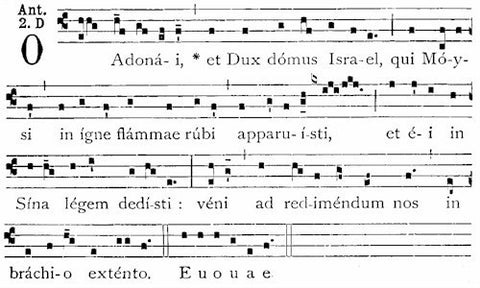
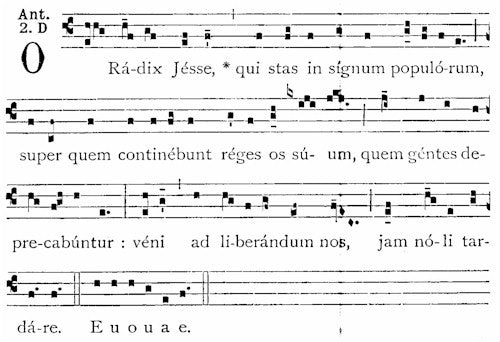
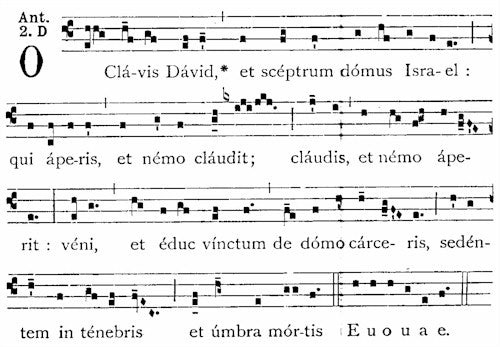
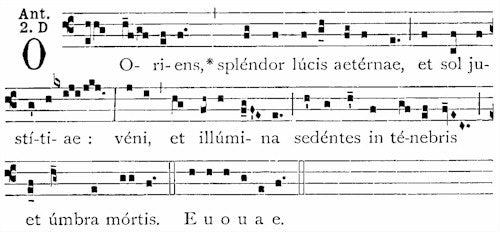
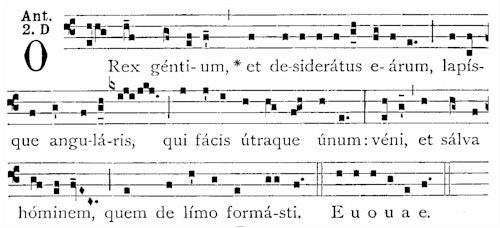
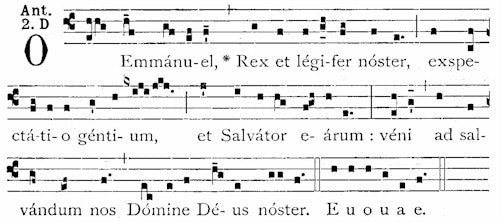
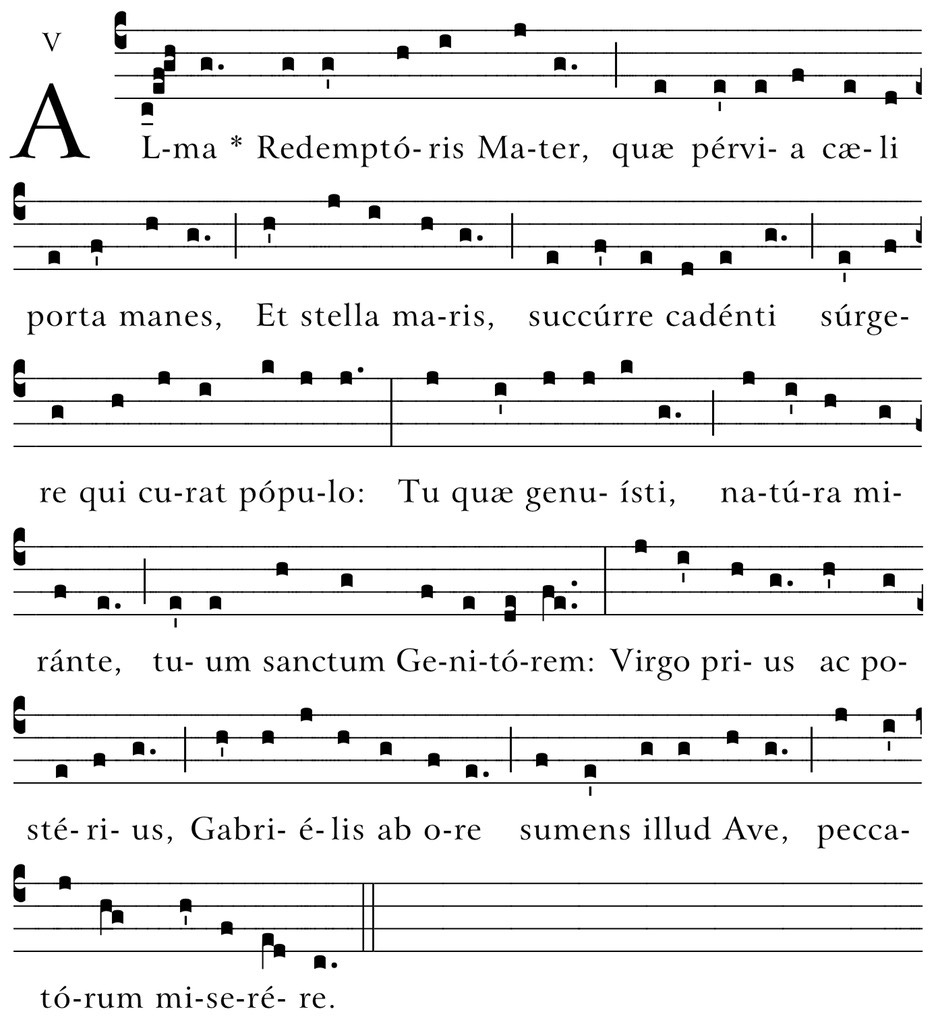

Sara, I loved this. I have only listened to James' chant of the O Sapientia but so enjoyed being able to follow along with the Latin as he voiced the notes. I listen to Margaret Rizza and her group's work often in the evening before bed (of course it's lots of voices!) but this singular, brave sound of your husband's was perfect.
Thank you!
What a great resource! My almost 4 year old is really into singing/repeating after us in prayer right now. He’s loved the St. Andrew novena which he calls the “repeat after me prayer” and he has been singing lullabies of his own composition to baby Jesus and the rest of the family. So definitely want to try the antiphons on him!